
Blood of Kings
¥68.57
A reflection on life, The Blood of Kings describes in raw emotion and evocative language all aspects of what it is to be a man, a poet, a soldier, a friend. This poetry, with a dark edge, covers the loss of love, death, religion, friendship, war and a philosophical outlook on what they all really mean. Not always easy reading, but with depth and passion, JB Brown describes a passage of rights where the juxtaposition of life, its highs and its accompanying pain are only too real.

Laurie Lee Selected Poems
¥98.00
Lee's first love was always poetry, though he was only moderately successful as a poet. Lee's first poem appeared in The Sunday Referee in 1934. Another poem was published in Cyril Connolly's Horizon magazine in 1940 and his first volume of poems, The Sun My Monument, was launched in 1944. This was followed by The Bloom of Candles (1947) and My Many-coated Man (1955). Several poems written in the early 1940s reflect the atmosphere of the war, but also capture the beauty of the English countryside. The poem "e;Twelfth Night"e; from My Many-coated Man was set for unaccompanied mixed choir by American composer Samuel Barber in 1968.

Maria's Story
¥39.14
When Robin Barratt and his wife first met Maria in Moscow, they had no idea how much of an impact she would have on their own lives. From the initial interest in her story, the horror of discovering her daily struggle to survive through to active involvement in trying to improve her life. Living on the streets and begging is a harsh reality for many in Russia but for those with a disability life can be doubly cruel. Overlooked by the authorities and people who should have helped her, Maria willingly shared her story with the author who, in turn, made a promise, not only to tell the world about her situation, but to try and make a real difference. Maria's Story documents the true story of one woman's fight for survival against all the odds and those who tried to help her. It uncovers the truth of how many people continue to live in poverty in one of the world's most vibrant cities. Desperately sad, haunting but frequently uplifting, this book is a tale about overcoming adversity and, above all, never losing hope.

Planning for Learning through ICT
¥73.48
Planning for Learning through ICT aims to introduce young children to what ICT is, and provides over six weeks worth of activities that explore a range of technologies suitable for children 3-5. The book provides ideas for helping children learn about the different purposes of ICT and explores how to use ICT to create, to find information, to play, to shop. The book focuses in particular on how to use ICT creatively as well as outdoors. Whatever your daily learning, this book aims to show how ICT can be easily and appropriately included in your everyday play and learning.

St James in the Bush
¥39.14
Promoting positive community was something that just came naturally to Francis Boatwright, a pioneer educationalist who worked for many years in Mozambique. His great passion was helping others reach their potential and was also good at bringing healing to people, so they could know themselves as whole persons capable of contributing to human flourishing. Boatwright moved to Zimbabwe, a country of natural beauty, in the middle of the twentieth century with his wife Monica who had an excellent command of the Nguni languages. As they had no house at first, the Boatwrights camped out. But the bush was very thick. It wasn't long before they started getting visits from wild animals and snakes of all kinds...
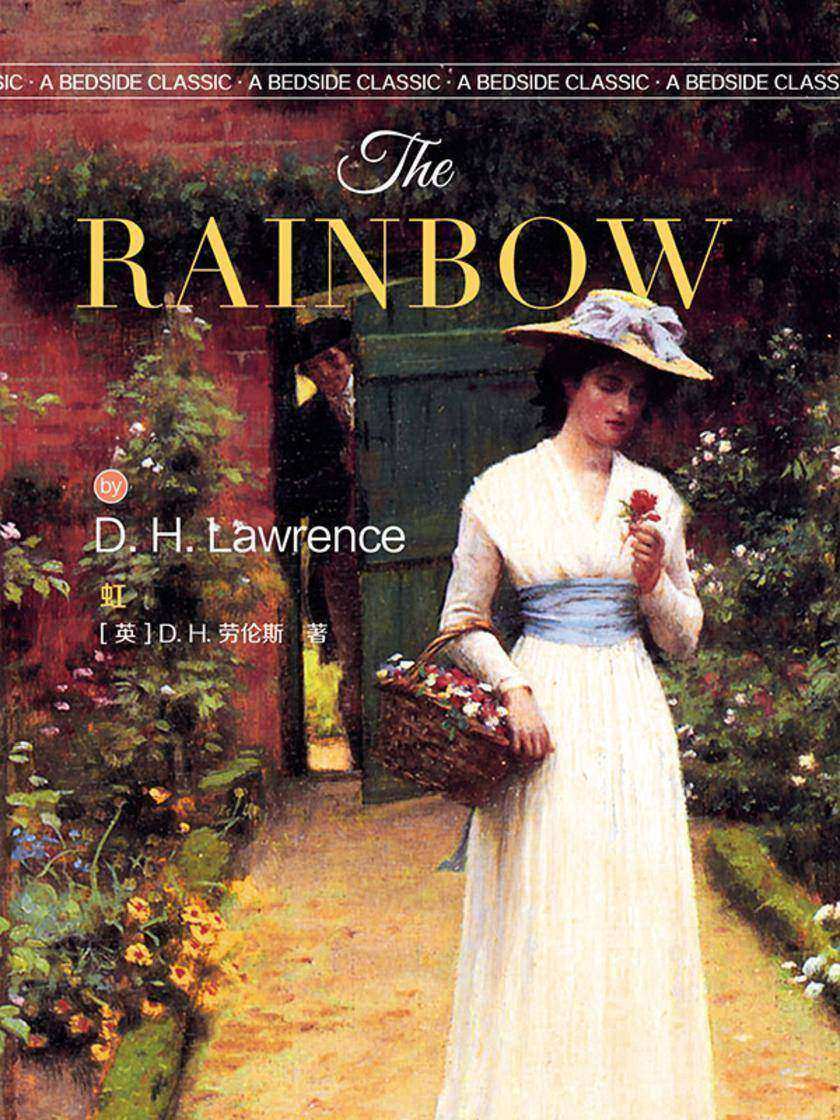
虹(英语文库)
¥20.99
本书作为我社“经典英语文库”第15辑中的一种,精选由英国著名作家D.H劳伦斯劳伦斯创作的长篇小说《虹》。本书通过一家三代人的遭遇,描述了工业革命给传统的乡村带来的巨大变化,同时以巨大的热情和深度,探索有关性的心理问题。代人的生活带有田园诗的色彩,同时也预示古老文明即将结束。第二代人精神的苦闷和呆滞的目光,是令人窒息的工业化社会的好注解。第三代人的探索具有积极的社会意义,表达了人们要冲破狭窄的生活圈子,渴望一种自然和谐的生活。

Flush 阿弗小传(英文版)
¥29.99
“事情并不简单,而是错综复杂的。如果它咬了布朗宁先生,那是因为他也咬了她。仇恨并非只是仇恨;仇恨也可以是爱。” 弗吉尼亚·伍尔夫为诗人伊丽莎白·巴雷特·勃朗宁(Elizabeth Barrett Browning)的西班牙猎犬所著的传记,令人愉悦,探讨了作为人类以及作为狗的意义。

150 Best Terrace and Balcony Ideas
¥167.88
150 Best Terrace and Balcony Ideas is the ultimate resource for innovative terrace, roof garden, patio, and balcony design ideas for outdoor spaces of all shapes and sizes. Featured inside this lavish guidebook are 150 never-before-shared tips and techniques provided by internationally renowned architects and designers, along with full-color photographs and diagrams of sixty-five uniquely beautiful projects from around the world. The design ideas reveal how to create exterior spaces that are clean, modern, and comfortable, as well as how to use cutting-edge materials that are practical, cost-effective, and environmentally friendly. Best of all, the design ideas featured inside are easy to follow and can be tailored to the unique tastes and needs of individual homeowners.

Until I Say Good-Bye
¥83.03
In June 2011, Susan Spencer-Wendel learned she had amyotrophic lateral sclerosis (ALS) Lou Gehrig disease an irreversible condition that systematically destroys the nerves that power the muscles. She was forty-four years old, with a devoted husband and three young children, and she had only one year of health remaining. Susan decided to live that year with joy. She quit her job as a journalist and spent time with her family. She built an outdoor meeting space for friends in her backyard. And she took seven trips with the seven most important people in her life. As her health declined, Susan journeyed to the Yukon, Hungary, the Bahamas, and Cyprus. She took her sons to swim with dolphins, and her teenage daughter, Marina, to Kleinfeld bridal shop in New York City to see her for the first and last time in a wedding dress. She also wrote this book. No longer able to walk or even to lift her arms, she tapped it out letter by letter on her iPhone using only her right thumb, the last finger still working. However, Until I Say Good-Bye is not angry or bitter. It is sad in parts how could it not bebut it is filled with Susan optimism, joie de vivre, and sense of humor. It is a book about life, not death. One that, like Susan, will make everyone smile. From the Burger King parking lot where she cried after her diagnosis to a snowy hot spring near the Arctic Circle, from a hilarious family Christmas disaster to the decrepit monastery in eastern Cyprus where she rediscovered her heritage, Until I Say Good-Bye is not only Susan Spencer-Wendel unforgettable gift to her loved ones a heartfelt record of their final experiences together but an offering to all of us: a reminder that every day is better when it is lived with joy.
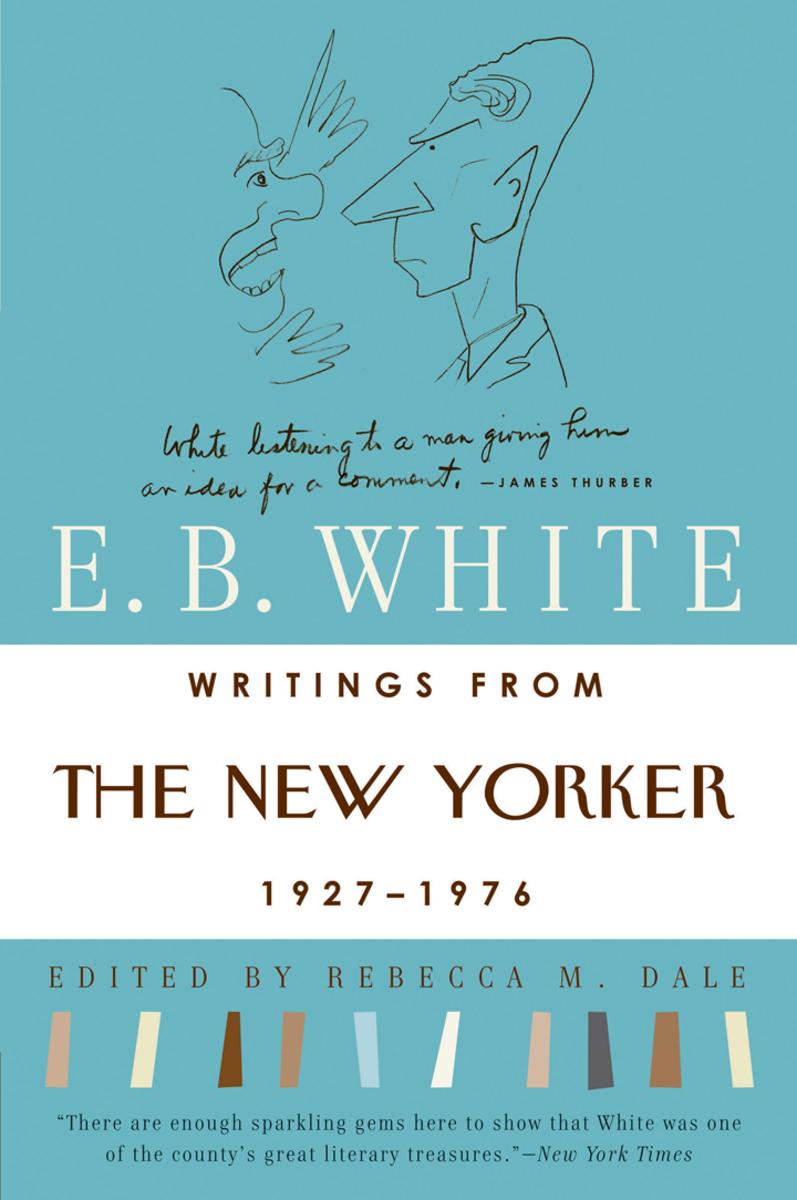
Writings from The New Yorker 1925-1976
¥88.56
A delightful, witty, spirited collection of short pieces and essays by the inimitable E. B. White.

William Morrow
¥166.09
NOW A BLOCKBUSTER MOTION PICTURE DIRECTED BY CLINT EASTWOOD NOMINATED FOR SIX ACADEMY AWARDS, INCLUDING BEST PICTURE A celebration of the remarkable life and legacy of fallen American hero Chris Kyle This commemorative memorial edition of Kyle bestselling memoir features the full text of American Sniper , plus more than eighty pages of remembrances by those whose lives he touched personally including his wife, Taya; his parents, brother, and children; Marcus Luttrell and other fellow Navy SEALs; veterans and wounded warriors; lifelong friends; and many others. He was the top American sniper of all time, called the legend by his Navy SEAL brothers, and a hero by those he served on the home front . . . From 1999 to 2009, U.S. Navy SEAL Chris Kyle recorded the most career sniper kills in United States military history. Kyle earned legendary status among his fellow SEALs, Marines, and U.S. Army soldiers, whom he protected with deadly accuracy from rooftops and stealth positions. Gripping and unforgettable, Kyle masterful account of his extraordinary battlefield experiences ranks as one of the greatest war memoirs of all time. A native Texan who learned to shoot on childhood hunting trips with his father, Kyle was a champion saddle-bronc rider prior to joining the Navy. After 9/11, he was thrust onto the front lines of the War on Terror, and soon found his calling as a world-class sniper who performed best under fire. He recorded a personal-record 2,100-yard kill shot outside Baghdad; in Fallujah, Kyle braved heavy fire to rescue a group of Marines trapped on a street; in Ramadi, he stared down insurgents with his pistol in close combat. Kyle talks honestly about the pain of war of twice being shot, and experiencing the tragic deaths of two close friends. American Sniper also honors Kyle fellow warriors, who raised hell on and off the battlefield. And in moving first-person accounts throughout, Kyle wife, Taya, speaks openly about the strains of war on their marriage and children, as well as on Chris. Adrenaline-charged and deeply personal, American Sniper is a thrilling eyewitness account of service and sacrifice that only one man could tell.

House, M.D. 豪斯医生官方指南
¥105.17
The authorized guide to the television phenomenon House, M.D. For the last six years House, M.D. has been one of the most popular and captivating shows on television. Following the stories of a misanthropic genius doctor named Gregory House and his team of specialists, each week the show confronts medical mysteries that have baffled the best minds in medicine. Centered around one of the most compelling characters on television brilliantly portrayed by actor Hugh Laurie the Emmy Award winning TV drama has been keeping millions of viewers intrigued and enthralled since it began, always offering an entertaining mixture of drama and humor. Based on unprecedented access to the show's cast members and creative staff, House, M.D. is the first fully authorized guide to the hit medical drama, offering a close-up view inside the world of House . From the show's genesis to today, this companion provides unique insight into the TV drama, as the actors, writers, and producers who've created these characters describe in their own words what the show means to them. This book also delves into fascinating discussions of the show's medical science and controversial ethical issues, as well as includes exclusive photographs from the set and an intimately detailed look at the making of an episode. Essential reading for any House fan, House, M.D. is the ultimate behind-the-scenes guide to TV's most captivating show.

Cruising Attitude
¥83.03
Flying the not-so-friendly skies... In her more than fifteen years as an airline flight attendant, Heather Poole has seen it all. She's witnessed all manner of bad behavior at 35,000 feet and knows what it takes for a traveler to become the most hated passenger onboard. She's slept in flight attendant crashpads in "Crew Gardens," Queens sharing small bedrooms crammed with bunk beds with a parade of attractive women who come and go at all hours, prompting suspicious neighbors to jump to the very worst conclusions. She's watched passengers and coworkers alike escorted off the planes by police. She can tell you why it's a bad idea to fall for a pilot but can be a very good one (in her case) to date a business-class passenger. Heather knows everything about flying in a post-9/11 world and she knows what goes on behind the scenes, things the passengers would never dream. Heather's true stories in Cruising Attitude are surprising, hilarious, sometimes outrageously incredible the very juiciest of "galley gossip" delightfully intermingled with the eye-opening, unforgettable chronicle of her fascinating life in the sky.
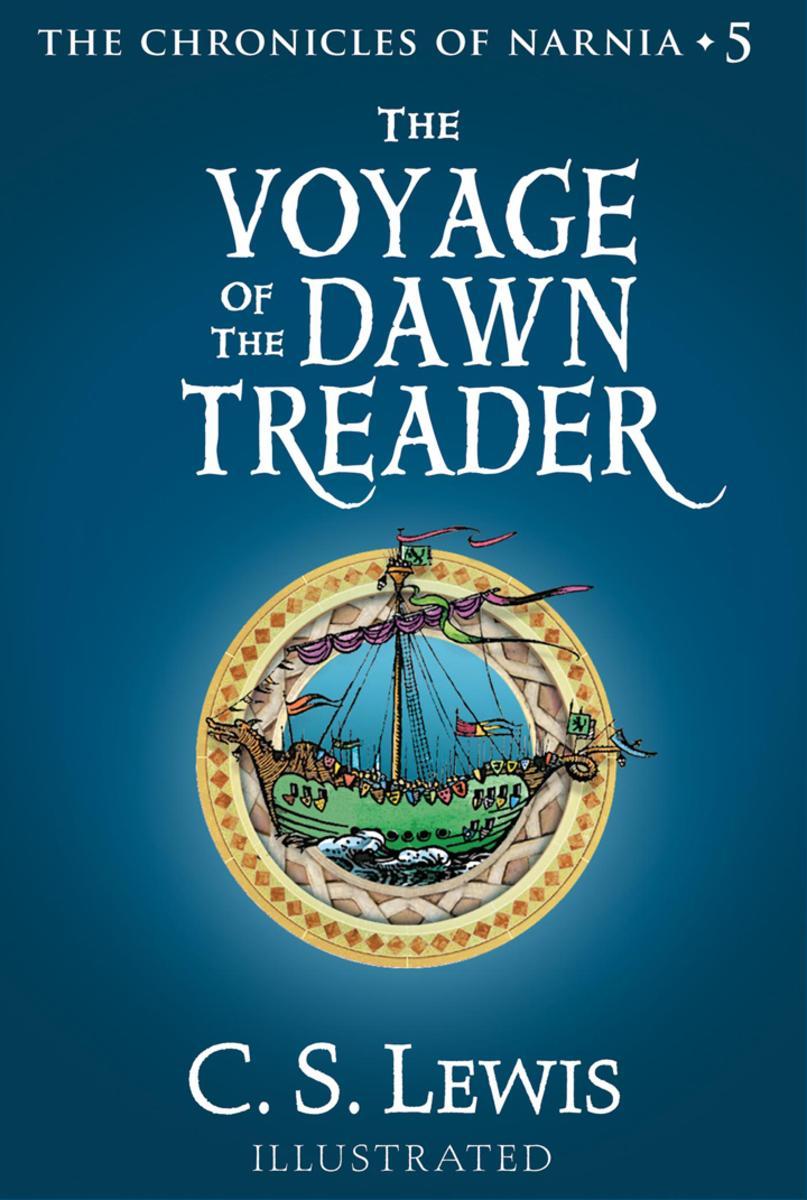
The Voyage of the Dawn Treader 纳尼亚传奇5(彩色插图版)
¥50.33
Illustrations in this ebook appear in vibrant full color on a full color ebook device, and in rich black and white on all other devices. Narnia . . . where a dragon awakens . . . where stars walk the earth . . . where anything can happen. A king and some unexpected companions embark on a voyage that will take them beyond all known lands. As they sail farther and farther from charted waters, they discover that their quest is more than they imagined and that the world end is only the beginning. The Voyage of the Dawn Treader is the fifth book in C.S. Lewis The Chronicles of Narnia, a series that has become part of the canon of classic literature, drawing readers of all ages into a magical land with unforgettable characters for over fifty years. This is a novel that stands on its own, but if you would like to continue to the journey, read The Silver Chair , the sixth book in The Chronicles of Narnia.

I Dreamed I Was a Very Clean Tramp
¥95.39
The sharp, lyrical, and no-holds-barred autobiography of the iconoclastic writer and musician Richard Hell, charting the childhood, coming of age, and misadventures of an artist in an indelible era of rock and roll... From an early age, Richard Hell dreamed of running away. His father died when he was seven, and at seventeen he left his mother and sister behind and headed for New York City, place of limitless possibilities. He arrived penniless with the idea of becoming a poet; ten years later he was a pivotal voice of the age of punk, starting such seminal bands as Television, the Heartbreakers, and Richard Hell and the Voidoids whose song Blank Generation remains the defining anthem of the era. Hell was significantly responsible for creating CBGB as punk ground zero; his Voidoids toured notoriously with the Clash, and Malcolm McLaren would credit Hell as inspiration for the Sex Pistols. There were kinetic nights in New York club demi-monde, descent into drug addiction, and an ever-present yearning for redemption through poetry, music, and art. We lived in the suburbs in America in the fifties, Hell writes. My roots are shallow. I'm a little jealous of people with strong ethnic and cultural roots. Lucky Martin Scorsese or Art Spiegelman or Dave Chappelle. I came from Hopalong Cassidy and Bugs Bunny and first grade at ordinary Maxwell Elementary. How this legendary downtown artist went from a prosaic childhood in the idyllic Kentucky foothills to igniting a movement that would take over New York and London restless youth cultures and spawn the careers of not only Hell himself, but a cohort of friends such as Tom Verlaine, Patti Smith, the Ramones, and Debbie Harry is just part of the fascinating story Hell tells. With stunning powers of observation, he delves into the details of both the world that shaped him and the world he shaped. An acutely rendered, unforgettable coming-of-age story, I Dreamed I Was a Very Clean Tramp evokes with feeling, clarity, and piercing intelligence that classic journey: the life of one who comes from the hinterlands into the city in search of art and passion.
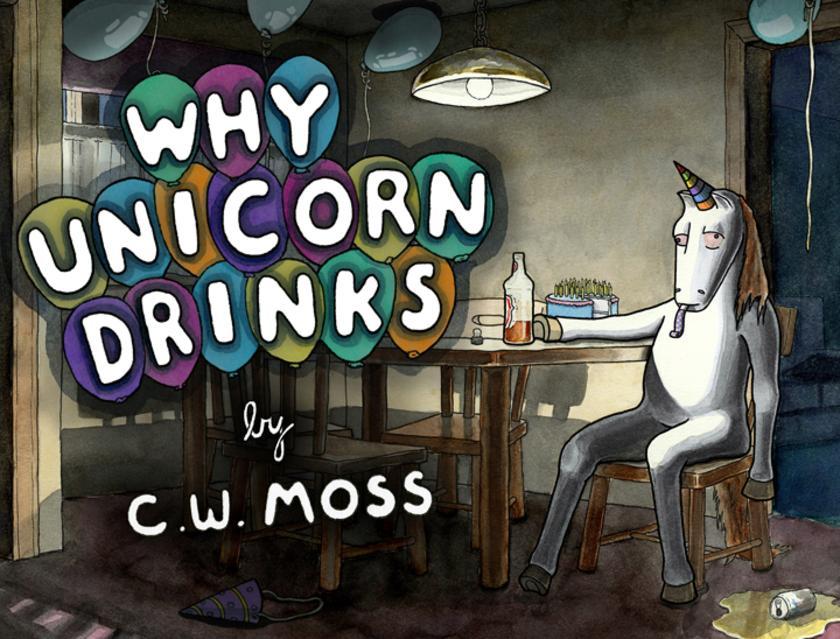
Why Unicorn Drinks
¥83.03
Unicorns are just like us. They have problems, stresses, and like to blow off some steam. Author and illustrator C. W. Moss explores the inner psyche of the single-horned in Why Unicorn Drinks . A follow-up to Unicorn Being a Jerk , this volume of 67 four-color illustrations and captions gives readers a glimpse into the sad reality of life as a mythical creature, and reveals what drives Unicorn to the bottle. As fans of Moss' online comic undoubtedly know, Why Unicorn Drinks pours a double-shot of laughter and irreverence. You'll never look at a unicorn the same way again.

What Happens in Scotland
¥41.46
She Woke Up Married When Lady Georgette Thorold awoke she saw . . . her corset hanging from the armoire . . . a very handsome, very naked Scotsman lying beside her . . . and a wedding ring on her finger! Before the attractive stranger can tell her his name, Georgette does the only sensible thing she runs for it. Little does she know, James MacKenzie isn't clear on what happened the night before either. All he knows is that his money is missing and the stunning woman who just ran from the room is either his wife or a thief . . . or possibly both. What happens in Scotland when two complete strangers fall madly, deeply in love?

The Night We Said Yes
¥55.93
A fun, romantic read, perfect for fans of Sarah Dessen and Susane Colasanti! What happens when Matt and Ella reunite one year after their breakupAre second chances really possible?Before Matt, Ella had a plan. Get over her ex-boyfriend and graduate high school—simple as that. But Matt—the cute, shy, bespectacled bass player—was never part of that plan. And neither was attending a party that was crashed by the cops just minutes after they arrived. Or spending an entire night saying "yes" to every crazy, fun thing they could think of.But then Matt leaves town, breaking Ella's heart. And when he shows up a year later—wanting to relive the night that brought them together—Ella isn't sure whether Matt's worth a second chance. Or if re-creating the past can help them create a different future.

On the Edge
¥55.33
From Allison van Diepen, author of Light of Day, Snitch, and Street Pharm, comes a sexy, dangerous novel—perfect for fans of Simone Elkeles and Paul Griffin—about a teen who witnesses a murder and gets caught up in the seedy world of Miami's gangs.Maddie Diaz never should have taken that shortcut through the park. If she hadn't, she wouldn't have seen two members of the Reyes gang attacking a homeless man. Now, as the only witness, she knows there's a target on her back.But when the Reyes jump her on the street, Maddie is protected by a second gang and their secretive leader, Lobo, who is determined to take down the Reyes himself. Lobo is mysterious and passionate, and Maddie begins to fall for him. But when they live this close to the edge, can their love survive?

Light of Day
¥101.00
From the author of On the Edge and Snitch comes a dangerous, sexy novel perfect for fans of Simone Elkeles.When Gabby Perez is almost drugged at a nightclub, she decides to take action. Teaming up with a mysterious stranger known as X, the two go after a gang who is drugging and kidnapping innocent girls off the Miami streets and forcing them into prostitution. As their search deepens, Gabby and X can't ignore their undeniable attraction to each other. Then Gabby discovers the truth about who X really is and the danger that surrounds him. Can their love survive the light of day?Light of Day is set in the same world as On the Edge (readers will recognize some of their favorite characters in this book) and features a diverse cast. With romance, action, and realistic friendships, this is a gripping story about finding out where you belong, discovering the power to make a difference, and finding true love along the way.
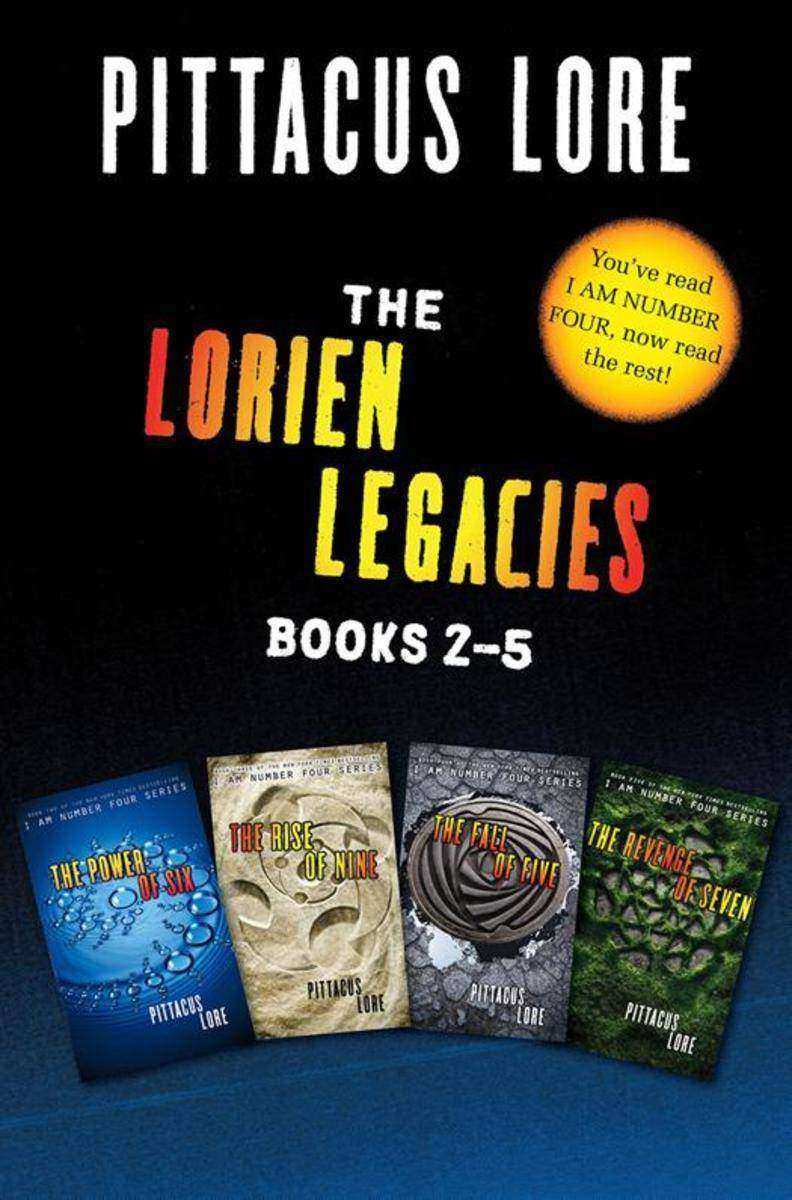
The Lorien Legacies: Books 2-5 Collection
¥381.65
Four thrilling bestselling novels are included in this collection:The Power of Six: I've seen him on the news. Followed the stories about what happened in Ohio. John Smith, out there, on the run. To the world, he's a mystery. But to me . . . he's one of us.There are six of us left. We're hiding, blending in, avoiding contact with one another . . . but our Legacies are developing, and soon we'll be equipped to fight. Is John Number Four, and is his appearance the sign I've been waiting forAnd what about Number Five and SixI am Number Seven. One of six still alive.And I'm ready to fight.The Rise of Nine: The stakes are higher than ever as John, Six, and Seven try desperately to find the rest of the Garde before it's too late. During the dangerous mission at the Mogadorian base in West Virginia, John found and rescued Nine. But even with their combined powers, special abilities known as Legacies, the pair barely escaped with their lives—and they lost Sam in the process. In order to save our world and their own, John and Nine must join forces with Six and Seven who have been battling the Mogadorians in Spain, and who are now trying to locate Number Eight in India.The Fall of Five: To defeat their enemy, the Garde must master their Legacies and learn to work together as a team. When the Garde receive a sign from Number Five—a crop circle in the shape of a Lorien symbol—they know they are close to being reunited. But could it be a trapTime is running out, and the only thing they know for certain is that they have to get to Five before it's too late.The Revenge of Seven: The fifth book in the New York Times bestselling I Am Number Four series! The Garde have suffered an unbearable loss. Number Five has betrayed them. Eight is gone forever. Ella has been kidnapped. The others are now scattered. The Garde are broken and divided once again, but they will not be defeated. As long as one still stands, the battle for Earth's survival is not lost.




 购物车
购物车 个人中心
个人中心



